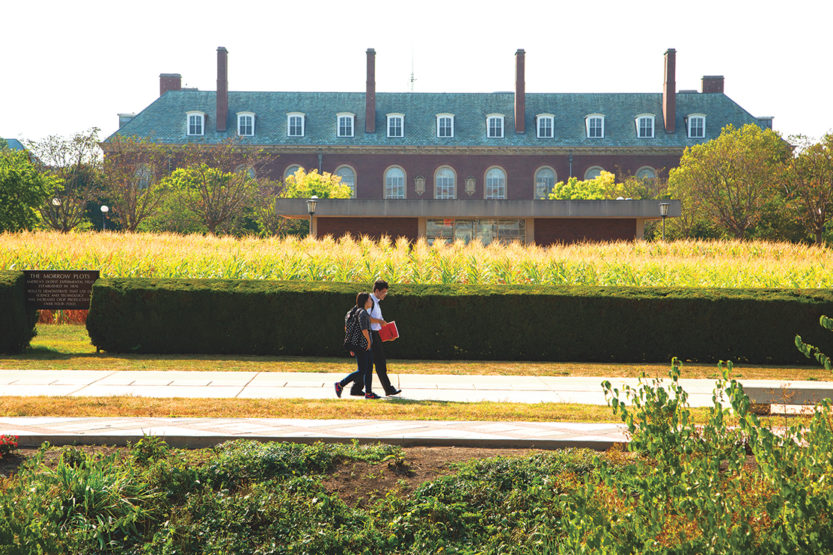Ingenious: The nation’s oldest
 The Morrow Plots were originally known as “Experiment 23” and consisted of 10 half-acre plots. (Image by L. Brian Stauffer/UI Public Affairs)
The Morrow Plots were originally known as “Experiment 23” and consisted of 10 half-acre plots. (Image by L. Brian Stauffer/UI Public Affairs) In October 1969, students protesting the Vietnam War charged toward the Morrow Plots located in the heart of the UI campus. In a bit of guerilla theater, they planned to run through the historic plots chanting, “Cream the corn,” and spraying water to symbolize the defoliation of vegetation in Vietnam. However, The Daily Illini reported that the marauders ran into a group of agricultural instructors and wound up discussing the history of the plots instead.
The Morrow Plots have dodged several threats over the years, including another October surprise, this one in 2003, when vandals stomped on the corn, creating a 25-foot-wide “alien crop circle.”
Through it all, the Morrow Plots have become a campus icon because they are the nation’s oldest agricultural field experiment. The idea for them germinated with University chemist C.W. Silver, who was inspired by England’s Rothamsted Field. Manly Miles, a UI professor of agriculture, ran with Silver’s idea and established the first plots in 1876. George E. Morrow, first dean of the UI College of Agriculture, published the first crop yield data in 1888; in his honor, the plots carry his name.
Designated as a National Historic Landmark in 1968, the plots are given campus-wide reverence. Most famously, the undergraduate library was built underground to prevent the plots from being in the shade. The decision is celebrated in the popular song by the UI vocal group, The Other Guys:
Oh, you can’t throw shade on the corn.
It’ll die as sure as you’re born.
No, we don’t mess around; our library’s underground.
‘Cause you can’t throw shade on the corn.
Sources: The Daily Illini, Oct. 16, 1969; The News-Gazette, May 3, 1998; The News-Gazette, Oct. 3, 2003; and the University of Illinois Archives.

